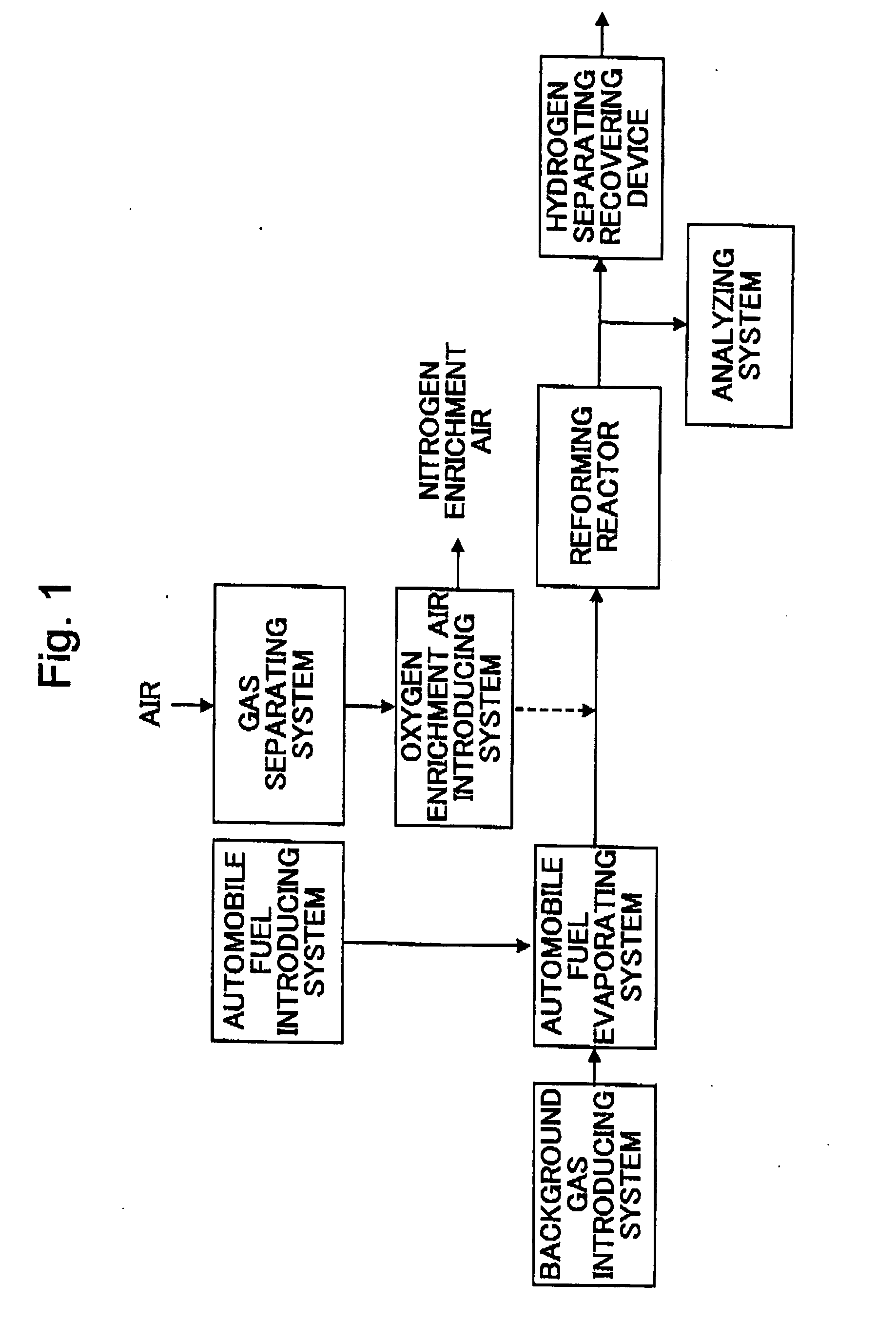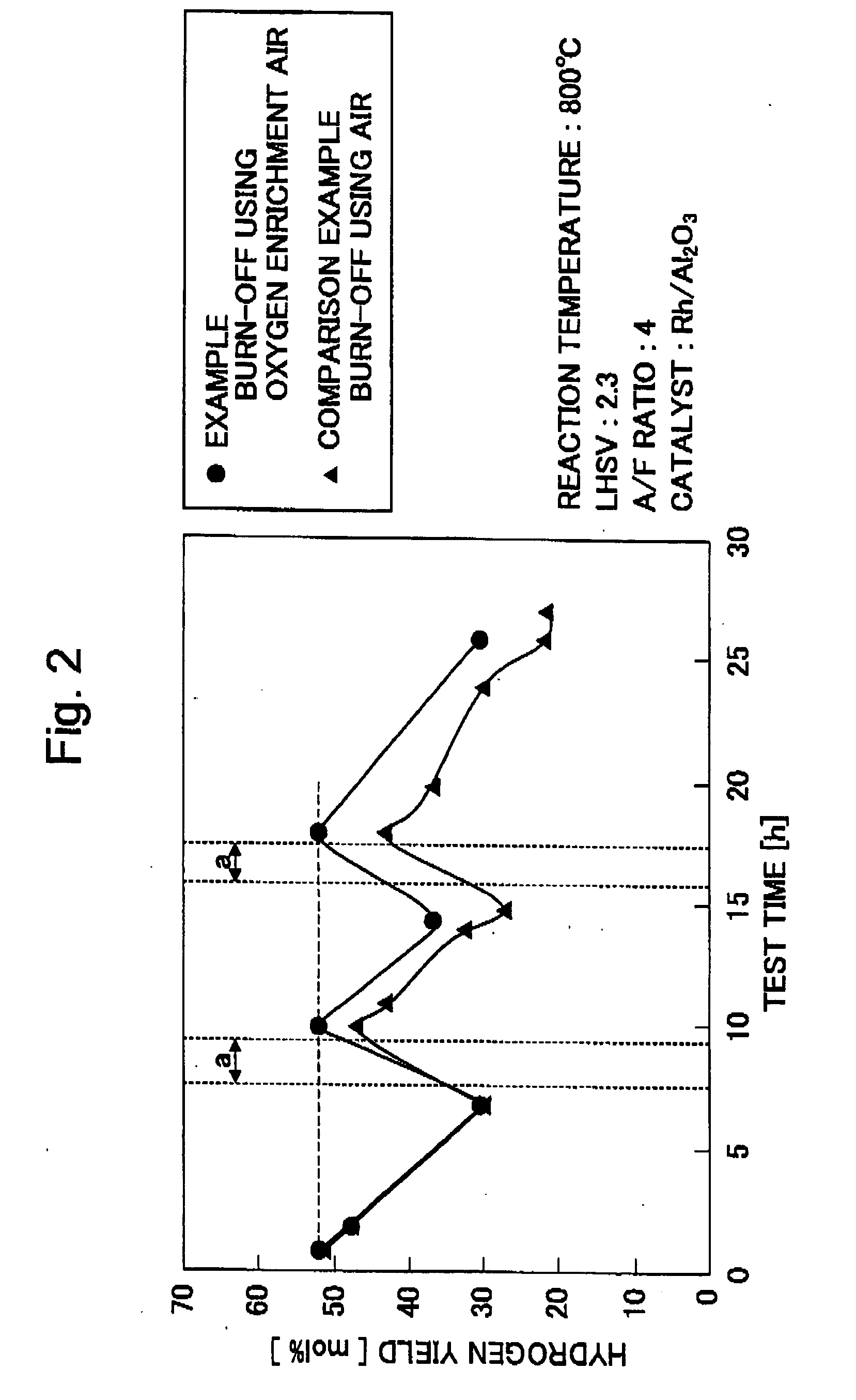Control method of catalyst activity
a technology of catalyst activity and control method, which is applied in the direction of physical/chemical process catalysts, other chemical processes, separation processes, etc., can solve the problems of reducing the number of effective active spots, reducing the efficiency of hydrogen production, and reducing the speed of the reaction, so as to achieve efficient re-usability, efficient manufacturing, and efficient re-usability.
- Summary
- Abstract
- Description
- Claims
- Application Information
AI Technical Summary
Benefits of technology
Problems solved by technology
Method used
Image
Examples
embodiment
[0029] The present invention will next be explained in detail on the basis of an example, but the present invention is not limited to this example.
example
[0030] The reforming using the partial oxidizing reaction of diesel fuel was performed and coke and an unreacted component deposited on the catalyst surface by this reforming reaction were burned off by using the oxygen enrichment air. The hydrogen manufacturing device of the continuous type was used as a hydrogen manufacturing device, and a partial oxidizing catalyst Rh / Al2O3 was used as the catalyst.
[Preparation of Partial Oxidizing Catalyst Rh / Al2O3]
[Preparation of γAl2O3]
[0031] About 100 g of prepared γAl2O3 (AKP-G30LA manufactured by Sumitomo Kagaku Co., Ltd.) was suspended to 200 mL of super pure water within a beaker for storing 500 mL. A stirrer piece manufactured by Teflon (registered trademark) was put into the suspended solution, and was slowly agitated for several minutes at room temperature by a magnetic stirrer with a hot plate. After the agitation, water was removed and the above operation was repeated three times. γAl2O3 performed three times with respect to the a...
PUM
| Property | Measurement | Unit |
|---|---|---|
| weight ratio | aaaaa | aaaaa |
| temperature | aaaaa | aaaaa |
| temperature | aaaaa | aaaaa |
Abstract
Description
Claims
Application Information
 Login to View More
Login to View More - R&D
- Intellectual Property
- Life Sciences
- Materials
- Tech Scout
- Unparalleled Data Quality
- Higher Quality Content
- 60% Fewer Hallucinations
Browse by: Latest US Patents, China's latest patents, Technical Efficacy Thesaurus, Application Domain, Technology Topic, Popular Technical Reports.
© 2025 PatSnap. All rights reserved.Legal|Privacy policy|Modern Slavery Act Transparency Statement|Sitemap|About US| Contact US: help@patsnap.com


